Whether you are a stud or a commercial beef cattle enterprise, the fundamentals at joining time are exactly the same.
Te Mania Angus ET program Manager James McCormack says while the numbers of cows involved, and the number of AI treatments used, will probably be greater in a stud, it is the care of both bulls and females and attention to detail during the first four weeks of joining which really counts.
James says it is crucial to have your bulls vet checked before they are put with the cows, and you must then observe them closely for the first two weeks to check they are working correctly.
He says if, for instance, they are constantly mounting the females and failing to serve, it is often because they are suffering either a penile irritation or loss of sensation.
“Once they get past those two first weeks and are performing correctly, they should be right for the rest of the joining,” James added.
“The cows also need to be monitored, and for them the key time is weeks three and four. If there are still cows cycling you most likely have a fertility issue with your bull, even though he might appear to be working well,” he says. By close monitoring, you can salvage what could be a serious problem, even if the timing is not ideal.”
James says at Te Mania Angus the females go through two rounds of AI after the cowherd is synchronised. It does make for big numbers and everything happening at the same time, but the condensed program works well for the AI technicians and also ensures a very tight calving.
He added once the AI has been done, and the bulls have passed their vet checks, then the cows will be put into paddocks and the mop up bulls take over.
Te Mania Angus tends to run those bulls at 1 per cent because the AI program is so refined and successful, but he recommends smaller players and commercial operators stick to their usual routines of around one bull for every 40 cows.
Over the past 6 weeks Te Mania Angus have run an AI program for 1250 females at its Mortlake headquarters. Manager, Sam Reid said both heifers, and cows with calves at foot, ran through a 23 day synchronized FTAI program for Round 1, and followed up with a second round.
Sam has shared some notes on managing this large scale program. Firstly, AI Programs should be planned well in advance because it’s a process that can be costly so it is important to maximize results and benefits. These include things such as –
- Mobs and mob sizes to suit facilities and workload
- Paddock selection and having grass available in close proximity to facilities for heat detection
- Paddock selection for logistics in and out of yard facilities to mother up cow and calf quickly and for ease of extracting heat detected females out of the mob and into the yards
Artificial insemination is very useful as it allows for large numbers of cattle to be joined compared to natural service and it also allows for cattle to be joined to superior genetics that would be otherwise too expensive to purchase the bull alone or difficult to access.
Tips to increase PTIC percentages for AI –
- Cattle handling. You want to get them back to the paddock on grass and with their calves as soon as possible with the least amount of stress whilst at the same time making sure all drugs are administered properly.
- Skilled people, such as staff, inseminators – be fully prepared and have the staff or contractors to support the program from the start to the finish.
- Good nutrition is essential and needs to happen at least six weeks before an AI program. If your body condition score is lacking it’s important to start an upward plane of nutrition well before your AI program to get them towards a healthy BCS of 3 or greater come joining. All nutrition requirements for heifers really need to start from weaning to make sure you are joining at an adequate joining weight.
- All cows and bulls need to be up to date with their disease management – some common vaccinations are 7in1 for both cows and bulls as well as Vibrio for bulls to protect against vibriosis (sexually transmitted disease)
- Mop up bulls need to be arranged and sorted for when you require them after your AI program is complete. It is important that the bull goes into the cows, stress free and sound. It is also important to monitor activity out in the paddock with the back up bull mainly to watch for lameness and that he is serving and also around the 21 day mark from when he entered the mob to check for returns.
- Work areas in the yards need to be set up so the people and cattle are relaxed and quiet. The aim is to make sure everyone is comfortable.
- Hygiene needs to be right up to scratch, all drugs, applicators, semen thawing unit, gun loading, insemination and so on need to be held to the highest standards.
- All records to need to be observed and recorded accurately
Sam added, when putting bulls out, be mindful that the bulls are in a fit physical condition before being put out with the cows. In effect they are being asked to run a marathon and so need to be in appropriate condition for age.








